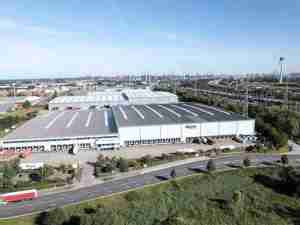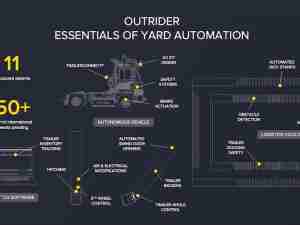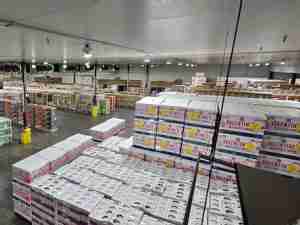Dominic Lam, General Manager of Business Development North Asia for WiseTech Global, says the technology tools to transform logistics productivity are within easy reach.
Shanghai, China - Logistics businesses in China face common issues: finding and retaining staff, overcoming the misallocation of skilled resources, and the lack of accurate and accelerated systems to underpin the quality of service demanded by clients.
Forwarding organizations are often held back by a reliance on paper. Many operate with discrete, functionally oriented, departmentalized resources (Import Sea & Air, Export Sea & Air, Customs Brokerage, and so on), and their staff tend to specialize in a single area. Other operations can be very linear, meaning that the person who starts a file often handles it at points along the way: from registration, through tracking, paying charges, arranging delivery, and on to billing.
Because we’ve enjoyed China’s low-cost labor environment and simply employed more staff to cover increasing loads, this hasn’t been too much of a problem, until recently.
Now - especially in the sea ports of Shanghai, Shenzhen, Tianjin, and Guangzhou - wages are rising quickly. And the impact of China’s slowing economy is creating fierce competition within the logistics industry.
The Challenges Facing Chinese Logistics Providers
- The impact of wages: In the high labor cost areas, employees are costing forwarders about 7,000 RMB (or 1,200 USD) per month per operative. Compared to Western economies - where a similar position could cost 3,000-5,000 USD per month - these salaries are still low. But the crucial factor here is that Chinese forwarders aren’t competing for workers or business with overseas forwarders; they’re competing internally. And as the economy slows, the internal market shrinks.
- Primitive systems: Freight forwarding the old fashioned way requires operational staff to learn vast amounts of processes, technical details, and customer specifications. You have to rely on people to memorize steps and to use the company handbooks, neither of which provide for variations or customer specifics. And, often your most skillful people are wasted on training other staff.
- The single child policy: Younger generation employees have entered the workforce at a time of low unemployment. They’re tech savvy, and as members of the ‘one child’ era, they tend to be overprotected by their families. So when they start with a forwarder that uses ‘primitive’ systems - where the work is complex and repetitive and there are high levels of stress – these young employees are not inclined to put in the effort. The work quickly becomes too hard, and they leave. And so an already costly staff turnover rate only becomes more and more costly.
Overcoming the Workforce Problems
Many forwarders and shipping lines are looking to overcome the issue of wages by relocating their documentation centers and customer service operations inland to lower cost areas. But splintering your business is not easy. Any relocation or outsourcing of services still needs to be managed.
The best solution is to improve the productivity of your staff to maximize the output of existing resources wherever they are located, rather than adding numbers.
Chinese freight forwarders and Customs brokers are having to quickly come to terms with not only the concept of productivity but the actual implementation of tools to streamline their operations. Luckily there’s a simple three-step process to a prosperous future.
The Three Steps to Productivity
If it’s worth doing three times, it’s worth not doing it at all. More precisely, if you’re willing to invest time, money, and effort over and over again in repeating a task or an entire process, then consider investing time, money, and effort just once in not having to do it at all. There are three steps to productivity:
- Eliminate unproductive, manual, and repetitive tasks
- Automate processes and workflows
- Accelerate throughput with the right tools
These three steps have transformed logistics businesses across the globe, and although China presents its own unique challenges, the logistics processes are essentially the same. If eliminating, automating, and accelerating works elsewhere, they can work just as well in China.
The Automation and Integration Effect
A single platform automates the supply chain and integrates the flow of data to manage all logistics transactions from one database across multiple users, functions, offices, and even countries and languages. This data integration means information is only entered once, cleanly and accurately, and never re-entered again. As it passes among modules, departments, and organizations – all within the single platform – the data grows, allowing more operators to do more work with much less effort. Handling costly credit notes can be eliminated, for example, once the correct invoicing is entered.
With automated notifications – such as Arrival Notices and Delay Alerts to clients, and communications to Customs – your processes are fast and high quality. Job data between two forwarders, to external brokers, or transport job data to external transport companies is automatically transmitted. And again, you gain all these benefits with no delay in communication or re-entry of data, and no mis-use of staff skills or resources being spent checking and correcting.
And even if staff do intervene in parts of a process, they can now see the obstacle right away and address it in a fraction of the time. You can detect and act on faults before they escalate and thus improve your quality control.
Driving Your Profitable Future
Chinese logistics organizations now have the potential to evolve into more international companies and to truly compete in the global market. The unique questions that forwarders and brokers face – of staff wages, staff motivation, and technology tools – can all be answered by implementing a productivity solution that saves costs, provides simplicity, and eliminates, automates, and accelerates the repetitive tasks that slow business.







_-_28de80_-_d88095865f9f1cbb4ecdd37edf61c63efd603428_lqip.png)

